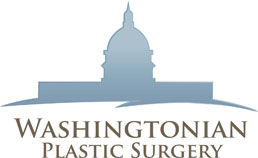Rhinoplasty is a surgical procedure that can remodel the nasal bone and cartilage to enhance the appearance and function of the nose.
Patients that undergo rhinoplasty often admit that that the size or shape of their nose has always been bothersome and that they’ve been considering surgery for a while. In addition, while rhinoplasty only adjusts the nose by a few millimeters, it can make a significant improvement in facial symmetry and overall structure.
Nevertheless, the procedure is one of the most difficult plastic surgeries and requires a skilled, experienced, and board-certified plastic surgeon.
If you’ve been thinking about having a nose job for cosmetic or health-related reasons, keep reading to learn everything you know about rhinoplasty.
What Concerns Can Rhinoplasty Address?
Rhinoplasty is a very versatile surgery and can help a wide-range of patients look and feel their best.
More specifically, men and women often choose to have a nose job to correct the following aesthetic concerns:
A crooked or prominent nose, a thin nose that requires widening, a pointy, upturned or drooping tip, flared nostrils, a bump on the bridge of the nose, and an asymmetrical nose.
Additionally, functional issues related to the nose can also be addressed with rhinoplasty and may include:
Damage to the nose caused by an accident, respiratory issues (i.e. deviated septum), and sinus issues (i.e. sinusitis).
What to Expect From the Initial Consultation?
The first step in undergoing a rhinoplasty is a consultation with a board-certified plastic surgeon.
During this initial meeting, patient motivation, goals, medical history, surgical history, medications, and allergies will be discussed. It’s important that individuals are open and honest with their surgeon, as this information is crucial to determining candidacy for rhinoplasty and surgical plan.
Patients can also expect to have a physical examination of the internal and external aspects of their nose as well as photography from different angles.
Finally, your surgeon will outline the treatment process, including the benefits, limitations, risks, side-effects, recovery, and cost of surgery. Patients should fully understand all of these components and make sure that they have realistic expectations before scheduling their rhinoplasty.
How to Prepare for a Rhinoplasty?
Your surgeon will provide explicit pre-operative instructions that you should follow.
However, some general guidelines that can help patients prepare for a rhinoplasty include:
Discontinue blood thinners, like aspirin, ibuprofen, and vitamin E, at least 2 weeks before surgery; Stop smoking 4-6 weeks prior to rhinoplasty; Pick-up prescription medications; Gather post-surgical supplies, including gauze, lip balm, fluids, and a humidifier; Arrange for transportation to and from the surgical facility; Request help from friend or family member for 24-48 hours after surgery.
What Type of Anesthesia Will Be Used During the Procedure?
The method of sedation used during rhinoplasty often depends on the patient’s health, complexity of the case, and surgeon’s recommendation or preference.
That being said, patients will either have general anesthesia or IV sedation. While you are completely asleep during general anesthesia, IV or twilight sedation involves numbing the nose with a local anesthetic and then administering a sedative through an IV in the hand.
What Are the Two Surgical Approaches to a Rhinoplasty?
During the initial consultation, your plastic surgeon will outline your surgical treatment plan and recommend either a closed or open rhinoplasty.
A closed rhinoplasty is performed with marginal incisions in the nostrils and an intercartilaginous incision that allows manipulation of the nasal bridge and tip. A key advantage of this technique is that it doesn’t cause any scarring. However, a closed rhinoplasty requires an immense amount of skill and expertise, as it allows far less visibility than an open approach.
Comparatively, an open rhinoplasty provides complete access to the nose through a V-shaped incision at the nasal columella. Once this cut is made, the surgeon is able to fold back the nasal skin and see the internal structures of the nose.
This approach allows greater predictability and symmetry because the entire nose can be evaluated at once. Nevertheless, it’s also associated with more swelling than a closed rhinoplasty.
What to Expect From Recovery?
Typically, a rhinoplasty requires 1 week of recovery, and the first 24-48 hours are the most uncomfortable.
Immediately after surgery, patients may experience a headache and/or aching, swelling, and bleeding from the nose. During this time, it’s important to rest in bed and keep the head elevated and the mouth well-lubricated.
While most patients describe rhinoplasty recovery as quite tolerable, pain medication should be taken following a schedule for 24-48 hours.
After 1 week, you will see your surgeon in follow-up, and splints, stitches, and any packing will be removed. You will then be able to return to work, but should avoid strenuous exercise for at least two weeks.
Over the course of the next few months, swelling will gradually subside and rhinoplasty results will become more evident. However, it can take up to 1 year to see the final outcome.
Patients should also take care to avoid exposing their nose to sun for six-12 months after rhinoplasty.
What Are the Risks and Possible Side Effects Associated With a Rhinoplasty?
In the hands of a capable surgeon, rhinoplasty is a very safe procedure. However, like any surgery, it does carry some risks and side effects that patients should be aware of.
Some temporary side effects of rhinoplasty include:
Bruising around the eyes, soreness and swelling, sinus inflammation, and nosebleeds. Most of these issues resolve on their own within a few weeks.
Some rare, but more serious rhinoplasty complications may include:
Infection; Negative reaction to anesthesia; Unsatisfactory results; Scarring; Numbness; Breathing difficulties; Chronic nosebleeds; Perforated septum; Burst blood vessels
Hematoma; and Need for a revision.
What Is the Cost of a Rhinoplasty?
The national average for a rhinoplasty is $5,000 to $10,000 and usually includes surgeon fees, facility fees, and anesthesia fees. However, cost can vary based on provider experience and skill, geographic location, and complexity of the case.
For additional information about rhinoplasty and to find out if it’s the right procedure for you, please call Washingtonian Plastic Surgery today to schedule a consultation with Dr. Navin Singh.



